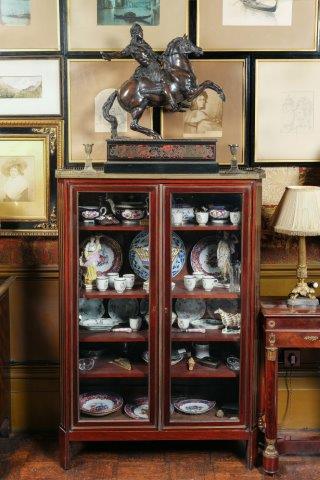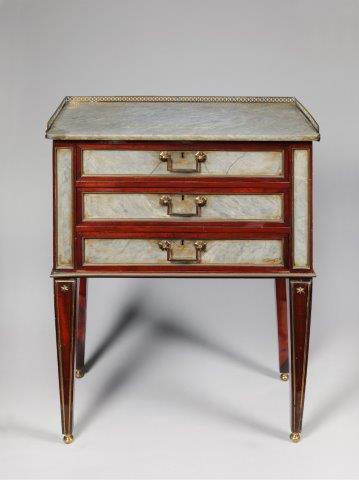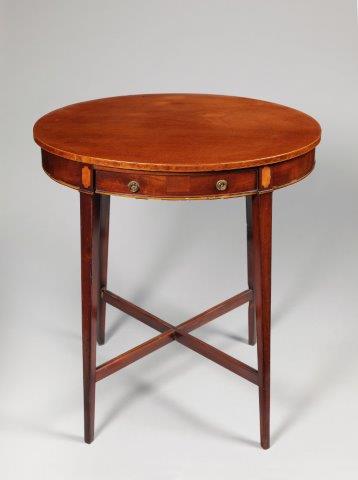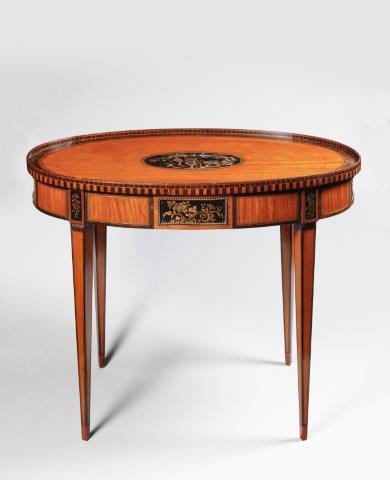Photographs of the Drawing Room and all the furniture items were kindly supplied by the Royal Borough of Kensington and Chelsea.

he Drawing Room on the first floor of 18 Stafford Terrace was the very heart of the house. It was particularly spacious: other houses in the terrace would have had two rooms on this floor but this had one, even in 1875 when the Sambourne family first moved in, giving them a spacious reception room across the whole floor — and to this they themselves later added an extension, above the one added to the Morning Room (see Robbins et al. 27). This additional first-floor area, with its large windows, was the cartoonist Linley Sambourne's own working space, or studio. As seen below, the whole room was a treasure trove of Victoriana, containing numerous examples of Sambourne's particular passions for china, bronzes and furniture.

Most of the objects were obtained before Sambourne began to keep a diary but he is known to have patronised the well-known furniture dealers Edwards and Roberts and Jackson and Graham. When the latter closed he quite likely visited Collinson and Lock as well.
Bureaux



Two views of a bureau, with (far right) a detail of it.



Left two: A writing desk. Right: A vitrine cabinet
All these firms employed specialist furniture designers but only Edwards and Roberts appear to have signed their pieces — there are three signed bureaux of theirs in the house, one with a little ivory label inside the top drawer. Consequently historians usually have to make make informed guesses when stating the maker, relying on known provenance, such as Windsor Castle, for similar pieces. Indeed, Sambourne had fine taste and bought only the best.
Bookcase Attributed to Jackson & Graham


This elaborate glass fronted bookcase bears all the hallmarks of work by Jackson and Graham, with its marble top surrounded by an ormulu gallery, ormolu decorations on the side pillars, and fine inlaid woods. By 1830 the classic French method of creating ormolu using mercury had been outlawed for its poisonous effects and the English firm of Elkington introduced the electro-gilding which has been used here.
Smaller Pieces



Left to right: (a) A small chest. (b) A round occasional table. (c) An oval occasional table.
The oval occasional table can be seen in the photograph of the Drawing Room at the top of the page, in the foreground towards the right. Robbins tells us that by 1877, there were already 250 items in the Drawing Room, "a figure that would only increase over subsequent years" (27). What is truly unusual and exciting, is the fact that many are still there, just where the family had installed them, today.
Bibliography
Robbins, Daniel, Reena Suleman and Pamela Hunter. Linley Samourne House: 18 Stafford Terrace, Kensington. London: Royal Borough of Kensington and Chelsea, 2003.
Created 21 August 2023